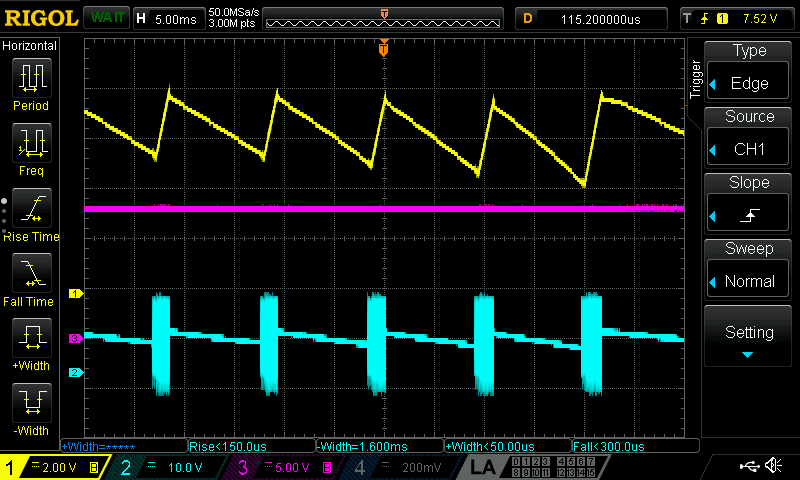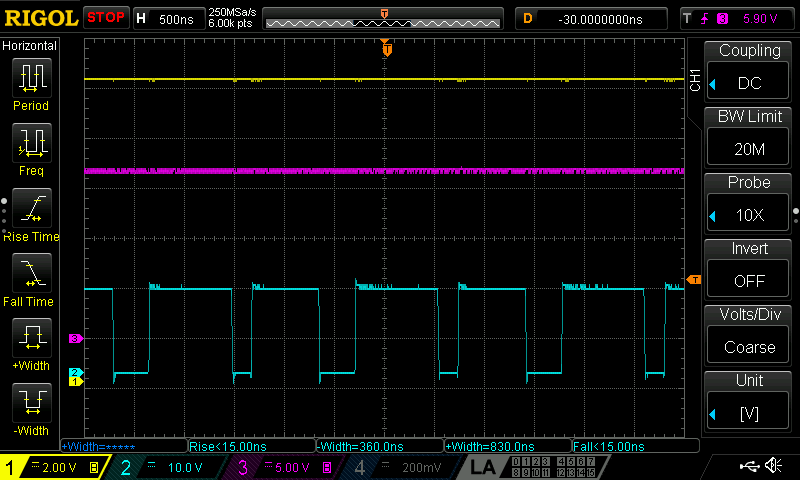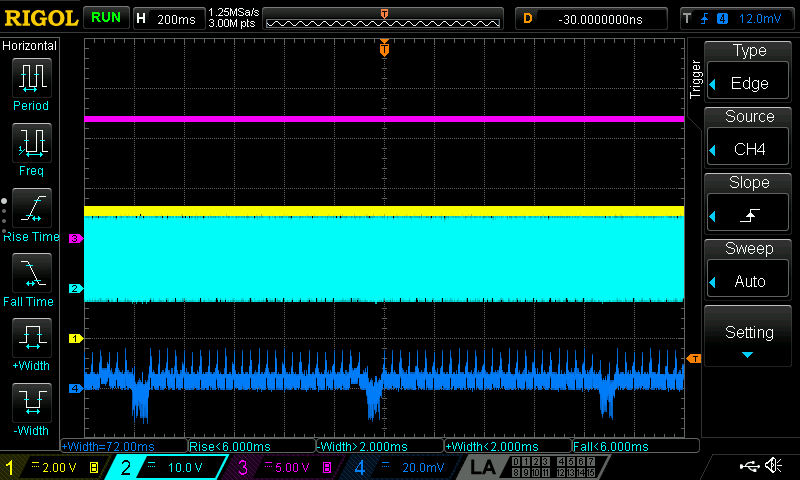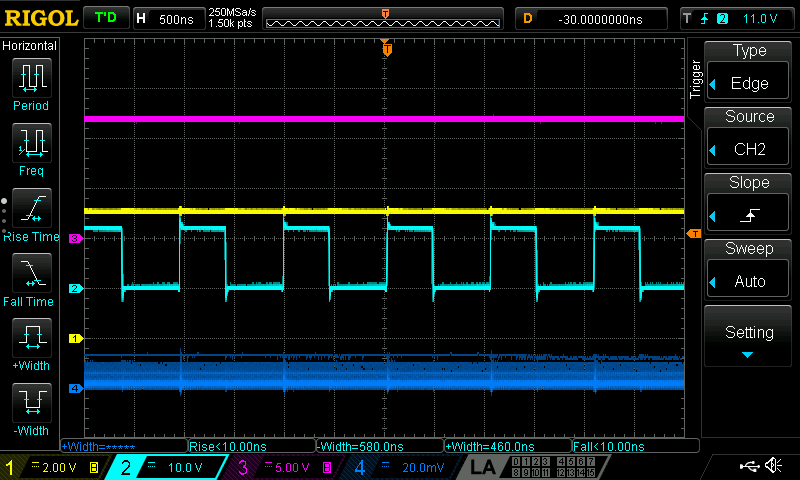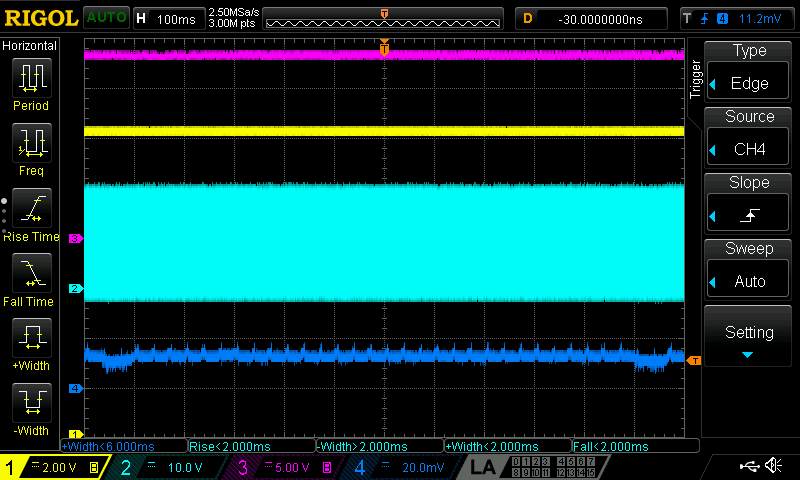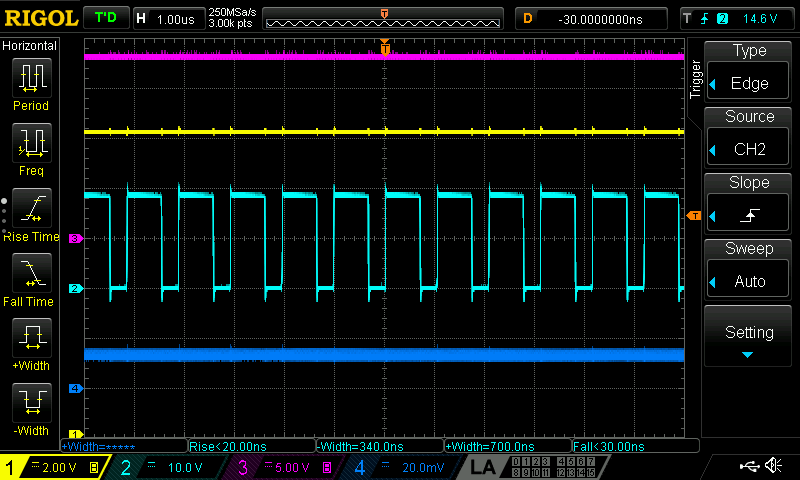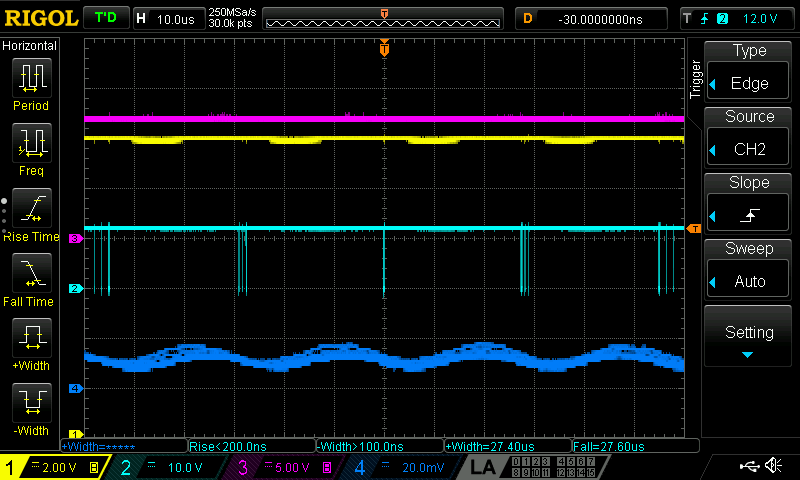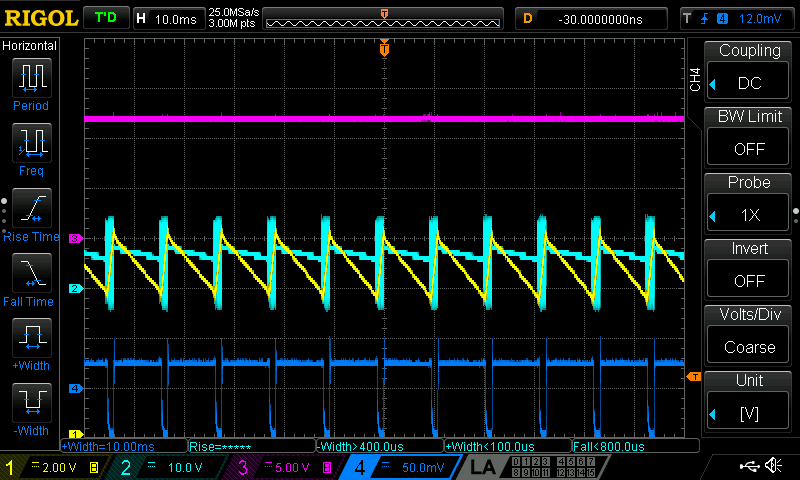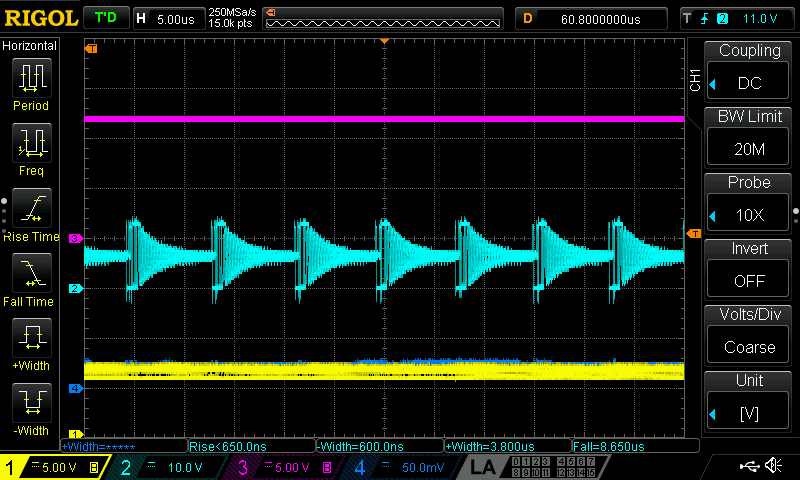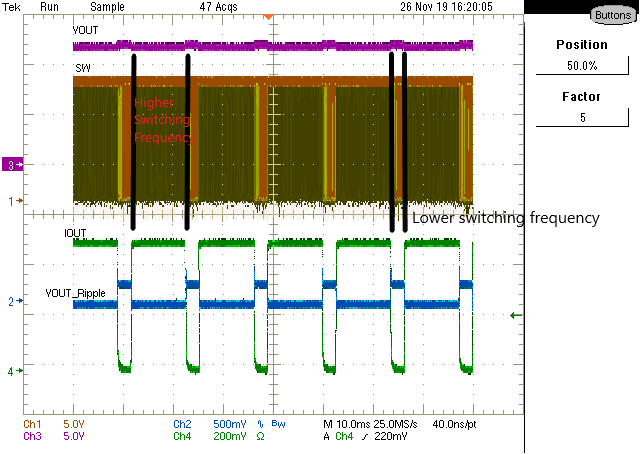Other Parts Discussed in Thread: LMZM23600
We're testing an LMZM23600EVM under ideal lab conditions. When the output is jumpered for 12VDC, the output oscillates wildly (5V excursions) with input-output differential voltages less than around 4V. With higher input-output differential voltages there is no oscillation. The load is an IP video camera consuming around 1.6W of power. The power source is a quiet lab supply. All cables are short and twisted. The's no oscillation with a static resistive load or when jumpered for a 5V output.


